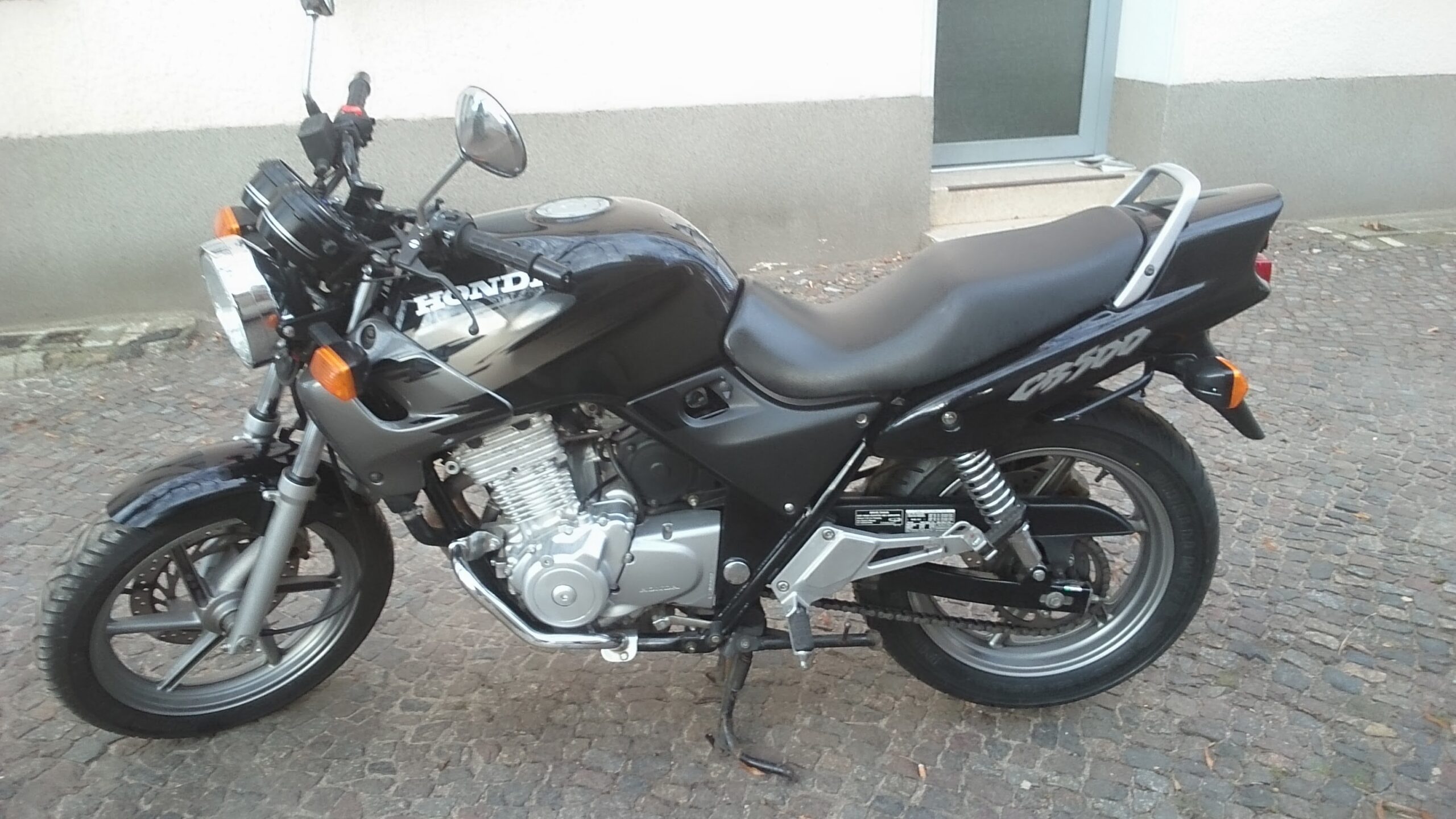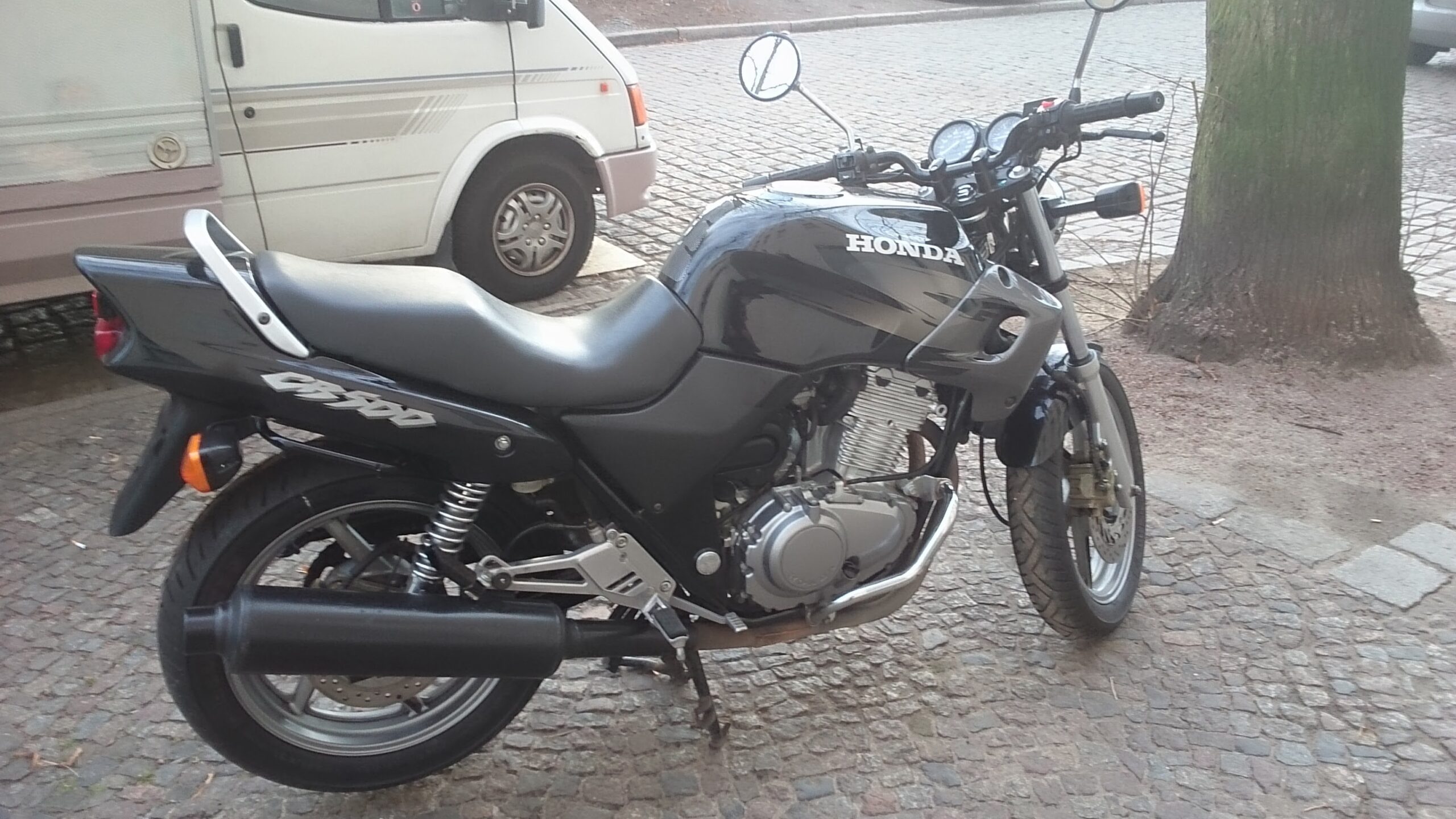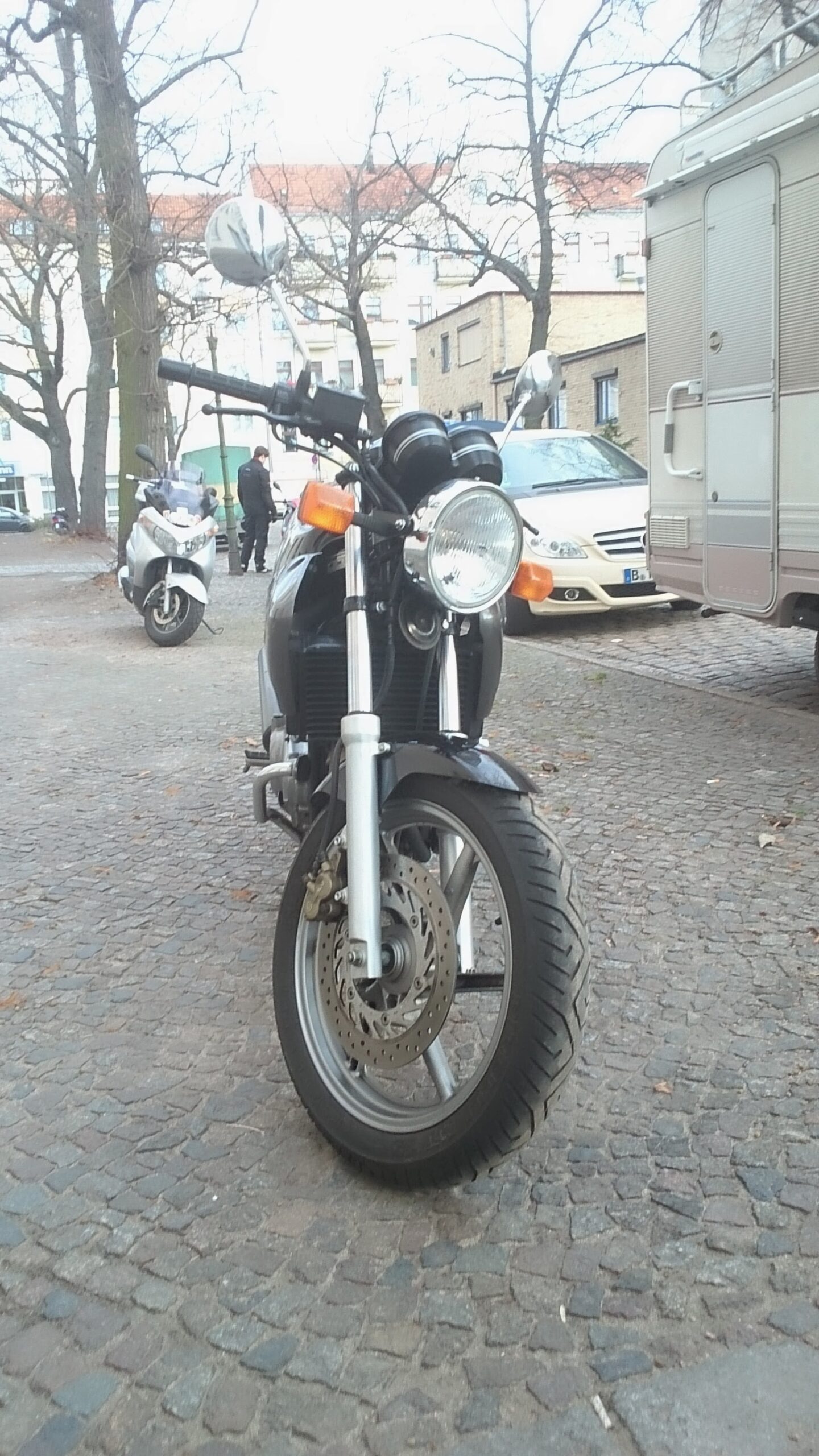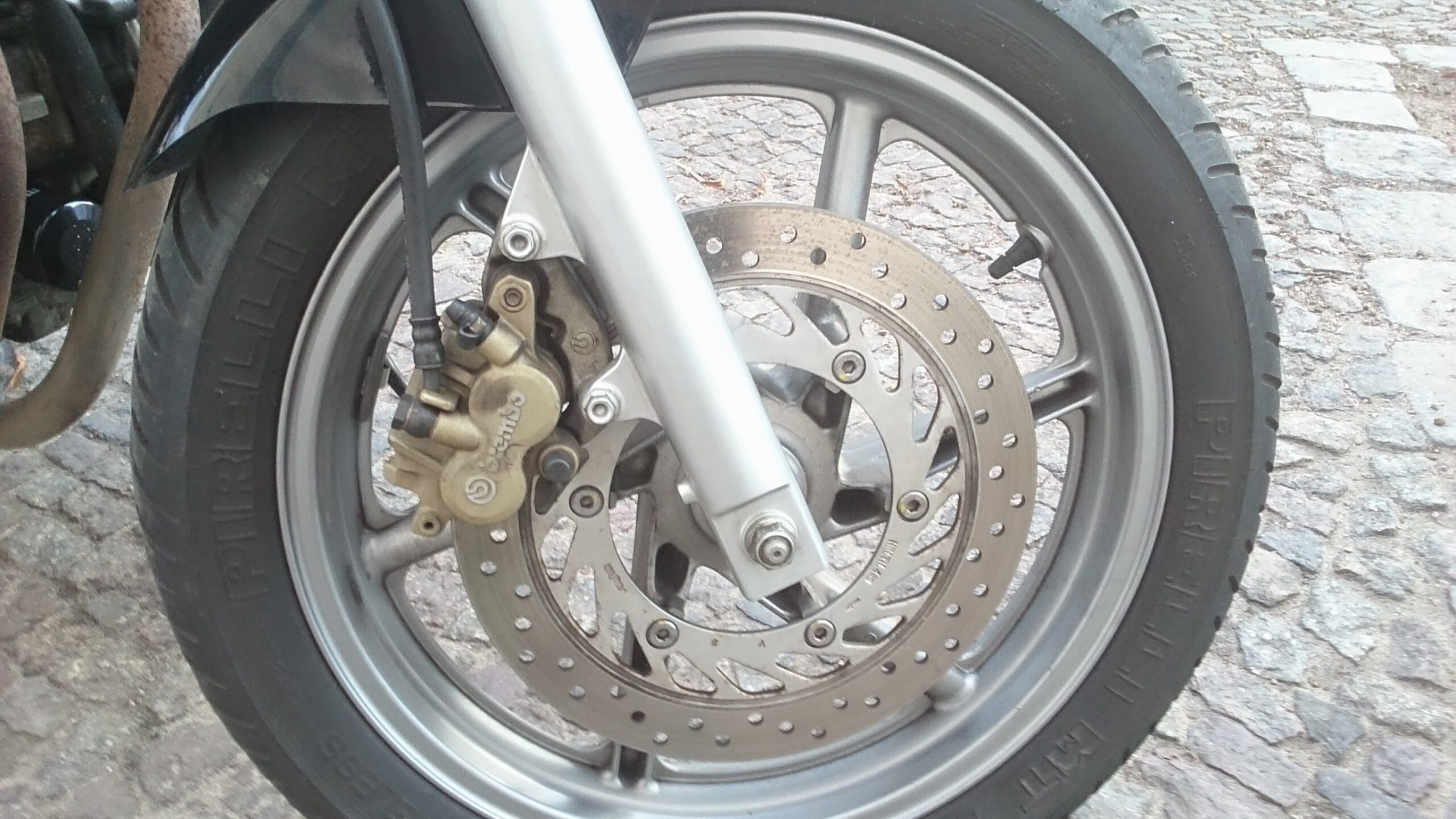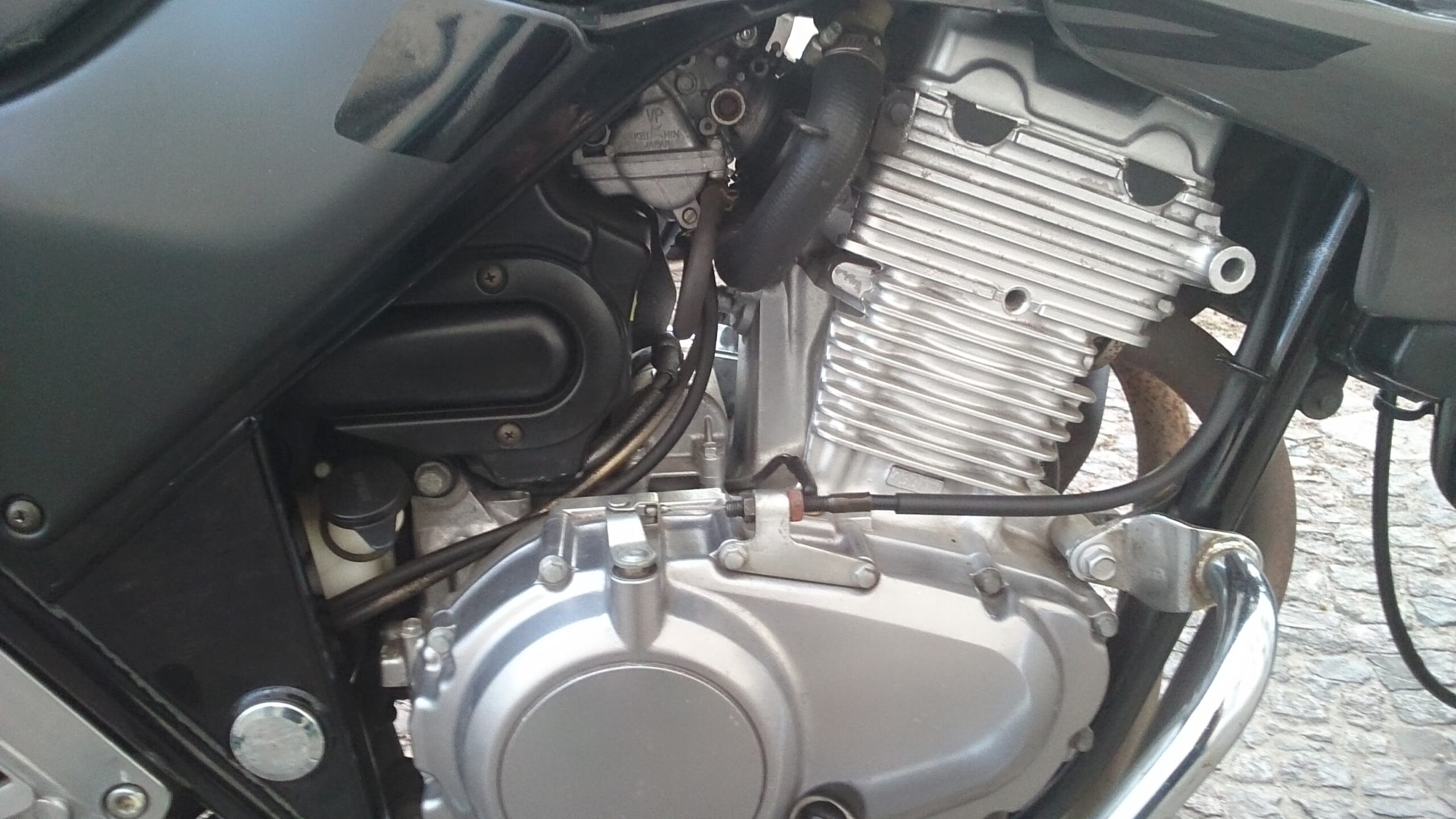Index:
History
Productionsfigures
Design
Model overview
Driving characteristics
Everyday use
Trunk
Spare Parts
Interior
Safty
Maintenance Costs
Fuel Consumptions
Motor Layout
Motor
Transmission
Breaks
Suspension
Common Issues
Driving pleasure
Market offering
Price development
Assessment
Datasheet
History
The Honda CB 500 PC 32, a towering icon in the world of motorcycles, traces its roots back to the golden age of the 1990s. This revolutionary motorcycle represents a remarkable chapter in Honda’s extensive history and carries the legacy of the company’s commitment to innovation, performance, and design.
Honda, the Japanese automotive giant, unveiled the CB 500 series in 1993. The CB 500 series was specifically designed to cater to new riders’ needs, providing a harmonious balance between power and control. With its introduction, the CB 500 PC 32 quickly became a popular choice among motorcycle enthusiasts, and with good reason.
Its development was spearheaded by a simple idea – to create a motorcycle that offers maximum power in a mid-weight package. The CB 500 PC 32 was among the first motorcycles to achieve this balance, powered by a 499cc parallel twin engine that kicked out around 50 hp. This robust engine, combined with its six-speed transmission and advanced suspension, offered an unparalleled riding experience.
From a design perspective, the CB 500 PC 32’s aesthetic was quintessentially ’90s, with its rounded headlights and a bulky fuel tank that bestowed a muscular look. Coupled with the metallic color schemes, it truly was a sight to behold on the roads.
Over the years, the Honda CB 500 PC 32 received various upgrades to remain relevant in an ever-evolving market. One key development was the introduction of improved braking systems and the integration of Honda’s Dual Combined Brake System. This feature allowed the front and rear brakes to work cohesively, resulting in improved handling and safety.
Furthermore, advancements in engine technology led to the creation of a more fuel-efficient yet powerful engine, keeping the CB 500 PC 32 competitive in the emerging ‘green’ market. The motorcycle also benefitted from ergonomic improvements, such as a comfier seat and better-positioned handlebars, enhancing the overall ride comfort and handling.
The Honda CB 500 PC 32 is more than just a motorcycle. It is a testament to Honda’s enduring commitment to innovation, excellence, and customer satisfaction. Its development journey from a simple mid-range bike to a beloved classic perfectly encapsulates this ethos.
Today, the CB 500 PC 32 is fondly remembered by motorcycle enthusiasts, both as a leap forward in motorcycling history and a nostalgic relic of the ’90s. It continues to inspire the designs of Honda’s current offerings, a testament to its timeless appeal and enduring legacy.
Design
The designer of the Honda CB 500 PC 32 was Tadao Baba. He was the Chief Engineer of Honda’s Motorcycle Research and Development Center during the 1990s. The inspiration behind the CB 500 PC 32 was to create a versatile and affordable middle-weight motorcycle that could cater to a wide range of riders.
In terms of design language, the Honda CB 500 PC 32 followed a minimalist and functional approach. The overall design was clean and straightforward, with an emphasis on practicality and usability. The compact and sporty styling elements were aimed at appealing to both novice and experienced riders.
Baba focused on creating a bike that was easy to handle, with a comfortable riding position and excellent maneuverability. The design language emphasized the balance between performance, reliability, and affordability, making the CB 500 PC 32 a popular choice among riders looking for a capable and accessible motorcycle.
Maintenance Costs
The maintenance, insurance, and general upkeep costs of a Honda CB 500 PC 32 will vary depending on several factors. These factors include the location, age of the motorcycle, driving record, and coverage choices. However, I can provide you with some general estimates to give you an idea of typical costs.
1. Maintenance: The cost of maintenance will depend on the specific repairs or services required. Routine maintenance tasks such as oil changes, filter replacements, and tire rotations can cost around $100 to $200 per year. However, more significant repairs or part replacements can increase the costs.
2. Insurance: Insurance premiums will vary depending on factors such as the rider’s age, driving history, location, and coverage choices. Since the Honda CB 500 PC 32 is considered a mid-range bike, insurance costs are generally lower compared to high-performance motorcycles. On average, motorcycle insurance can range from $200 to $800 per year. However, it is best to obtain insurance quotes from different providers to get an accurate estimate.
3. General Upkeep: General upkeep costs will include expenses like fuel, registration fees, and occasional upgrades or modifications. The fuel cost will depend on the fuel efficiency of the motorcycle and the rider’s usage. As for registration fees, they vary from state to state. Additionally, any modifications or upgrades can be done at the owner’s discretion, and these costs will vary depending on the chosen accessories or modifications.
Overall, it is essential to consider your specific circumstances, insurance requirements, and riding habits to determine the exact costs for maintenance, insurance, and general upkeep of a Honda CB 500 PC 32. It is advisable to consult with local dealerships, insurance companies, or online resources for more accurate estimates based on your location and circumstances.
Everyday use
The Honda CB 500 PC 32 is a popular choice among motorcycle enthusiasts seeking a versatile and practical bike for everyday use. With its impressive power output, comfortable seating position, and advanced features, it offers a compelling option for commuting and urban riding.
One of the key highlights of the Honda CB 500 PC 32 is its reliable and fuel-efficient engine. The bike is equipped with a 500cc, four-stroke, parallel twin-cylinder engine that delivers a smooth and responsive performance. Its power output is adequate for city riding and also offers excellent highway cruising capabilities.
In terms of handling and maneuverability, the CB 500 PC 32 performs admirably, making it easy to navigate through congested city streets and tight corners. Its lightweight construction and balanced chassis contribute to an agile and nimble riding experience, further enhancing its suitability for daily commuting.
Comfort is another area where this Honda bike excels. The seating position is upright and comfortable, allowing riders to maintain a relaxed riding posture even during long journeys. Additionally, the suspension setup absorbs bumps and road imperfections effectively, ensuring a smooth ride even on rough surfaces.
Practicality is enhanced by several convenient features. The CB 500 PC 32 has a generous fuel tank capacity, enabling users to go long distances without frequent refueling stops. The bike also offers ample storage options, including a spacious under-seat compartment and additional luggage options, making it ideal for carrying essential items or groceries.
Equipped with modern safety features, such as anti-lock braking system (ABS), the Honda CB 500 PC 32 provides added confidence and control, especially during emergency braking situations.
Overall, the Honda CB 500 PC 32 is highly regarded for its practicality and versatility. Its combination of power, comfort, maneuverability, and convenient features makes it an excellent choice for everyday use, whether it be for commuting to work or running errands around town.
Safty
The Honda CB 500 PC 32 offers several safety features to provide a secure riding experience. These may include:
1. Anti-lock Braking System (ABS): ABS helps prevent the wheels from locking up during severe braking, allowing the rider to maintain control and stability.
2. Combined Braking System (CBS): CBS distributes braking power evenly between the front and rear brakes when the rider applies the rear brake, providing enhanced stability during braking.
3. Dual Disc Brakes: The CB 500 PC 32 typically comes equipped with dual disc brakes in the front, providing powerful and reliable stopping power.
4. LED Lighting: LED headlights and taillights increase visibility, ensuring that the motorcycle is easily seen by other road users, especially during night-time or adverse weather conditions.
Regarding safety ratings, specific information about the Honda CB 500 PC 32’s safety test ratings is not readily available as it highly depends on the region and any applicable safety organizations’ assessments. However, Honda motorcycles, including the CB 500 series, are generally known for their solid build quality and safety reputation. It’s always recommended to consult local motorcycle safety authorities or organizations for more detailed and accurate safety ratings specific to your region.
Fuel Consumptions
The fuel consumption of the Honda CB 500 PC 32 may vary depending on various factors such as riding style, road conditions, and maintenance. However, on average, the Honda CB 500 PC 32 has a fuel consumption of around 55-60 miles per gallon (MPG). This makes it a relatively fuel-efficient motorcycle, which is one of the reasons why it is popular among riders looking for a balance between performance and economy.
Motor
The Honda CB 500 PC 32, also known as the Honda CB500, was produced from 1994 to 2003. During this period, it underwent several updates and changes. The engine used in the Honda CB 500 PC 32 models was a liquid-cooled, four-stroke, inline-twin configuration.
The specific engine specifications for the CB 500 PC 32 varied depending on the model year. The earliest models, produced from 1994 to 1996, had a displacement of 499cc, producing around 57 horsepower. These models featured a 180-degree crankshaft and three-valve cylinder heads.
From 1997 onwards, Honda made some modifications to the CB 500’s engine. The displacement was increased to 499.6cc, while the power output remained equivalent. The upgraded engine featured a redesigned cylinder head with four valves per cylinder. These changes improved the engine’s performance and efficiency.
In 2001, Honda made further updates to the CB 500’s engine. The displacement remained the same, but the power output was increased to around 57-60 horsepower. These changes were achieved through revised camshaft timing and a redesigned exhaust system.
Overall, the Honda CB 500 PC 32 featured a reliable and versatile engine that offered a good balance of power and efficiency for its class. It was known for its smooth power delivery and ease of maintenance, making it a popular choice among riders looking for a reliable and affordable motorcycle.
Breaks
The Honda CB 500 PC 32, had a braking system that consisted of both front and rear disk brakes. The front brake featured twin hydraulic discs, while the rear brake had a single hydraulic disc. These braking components provided efficient stopping power and enhanced safety for riders of the Honda CB 500 PC 32.
Suspension
The Honda CB 500 PC 32, featured a conventional suspension setup. It had a telescopic fork suspension at the front, providing a smooth and responsive ride. At the rear, it had a twin shock suspension system with adjustable spring preload, allowing riders to tailor the suspension to their preference and riding conditions. Overall, the suspension on the Honda CB 500 PC 32 provided a good balance between comfort and sportiness, making it a popular choice among riders.
FAQ
The Honda CB 500 PC 32 is a motorcycle model manufactured by Honda. It belongs to the CB series and is designed for on-road use.
The Honda CB 500 PC 32 is equipped with a 499cc engine, which falls under the middleweight category.
The CB 500 PC 32 is often considered a suitable option for beginner riders. It offers a balanced power output and is relatively easy to handle.
The Honda CB 500 PC 32 produces around 57 horsepower (43 kW) at 9,500 RPM, giving it ample power for everyday riding and occasional highway cruising.
The CB 500 PC 32 uses gasoline as fuel. It runs on unleaded petrol, making it convenient to refuel at regular gas stations.
The Honda CB 500 PC 32 has a curb weight of approximately 167 kg (368 lbs), making it relatively lightweight and agile for city riding.
The top speed of the Honda CB 500 PC 32 is around 180 km/h (112 mph), which is more than sufficient for most riders’ needs.
The Honda CB 500 PC 32 was produced between 1994 and 2002, and during that time, ABS was not a standard feature on this model. However, it is possible to find some used models equipped with ABS depending on the year and market.
The CB 500 PC 32 offers a comfortable riding position with an upright seating posture, which makes it suitable for longer rides. However, personal comfort preferences may vary, so it’s advisable to test ride the bike before making a decision.
Some popular alternatives to the Honda CB 500 PC 32 include the Kawasaki Ninja 400, Yamaha MT-07, Suzuki SV650, and the KTM Duke 390. These models offer similar engine capacities and may be worth considering based on your personal preferences and requirements.
Datasheet
Sure! Here’s a detailed datasheet for the Honda CB 500 PC 32, including its model variants and engine specifications:
Model Variants:
1. Honda CB 500 PC 32 (Standard Model)
2. Honda CB 500S PC 32 (Sport Touring Model)
3. Honda CB 500V PC 32 (Adventure Model)
Engine Specifications:
– Type: Four-stroke, liquid-cooled, twin-cylinder
– Displacement: 499 cc
– Bore x Stroke: 73.0 mm x 59.6 mm
– Compression Ratio: 10.8:1
– Valve Train: DOHC, 4 valves per cylinder
– Fueling: Electronic fuel injection (PGM-FI)
– Ignition: Digital transistorized with electronic advance
– Power Output: 46 hp (34 kW) at 9,500 rpm
– Torque: 32.1 lb-ft (43.5 Nm) at 7,000 rpm
– Gearbox: 6-speed
– Final Drive: Chain
Additional Features:
– Frame Type: Diamond
– Front Suspension: Telescopic fork, 120 mm (Standard and Sport Touring Models), 140 mm (Adventure Model) travel
– Rear Suspension: Pro-Link Swingarm, 120 mm (Standard and Sport Touring Models), 140 mm (Adventure Model) travel
– Front Brake: Single disc brake with dual-piston caliper (Standard and Sport Touring Models), Twin disc brakes with dual-piston calipers (Adventure Model)
– Rear Brake: Single disc brake with single-piston caliper
– Front Tire: 110/70-17
– Rear Tire: 130/70-17
– Wheelbase: 55.5 inches (1,410 mm)
– Seat Height: 31.9 inches (810 mm)
– Fuel Capacity: 4.2 gallons (15.5 liters)
– Weight (wet): 430 pounds (195 kg)
Note: Please keep in mind that these specifications may vary depending on the model year and region.
The Honda CB 500 PC 32 is a versatile motorcycle that offers a smooth and powerful performance. With its reliable twin-cylinder engine, comfortable ergonomics, and various model variants, it provides a great balance between commuting and touring capabilities. Whether you prefer the standard, sport touring, or adventure model, the Honda CB 500 PC 32 offers an enjoyable riding experience for enthusiasts of all levels.

